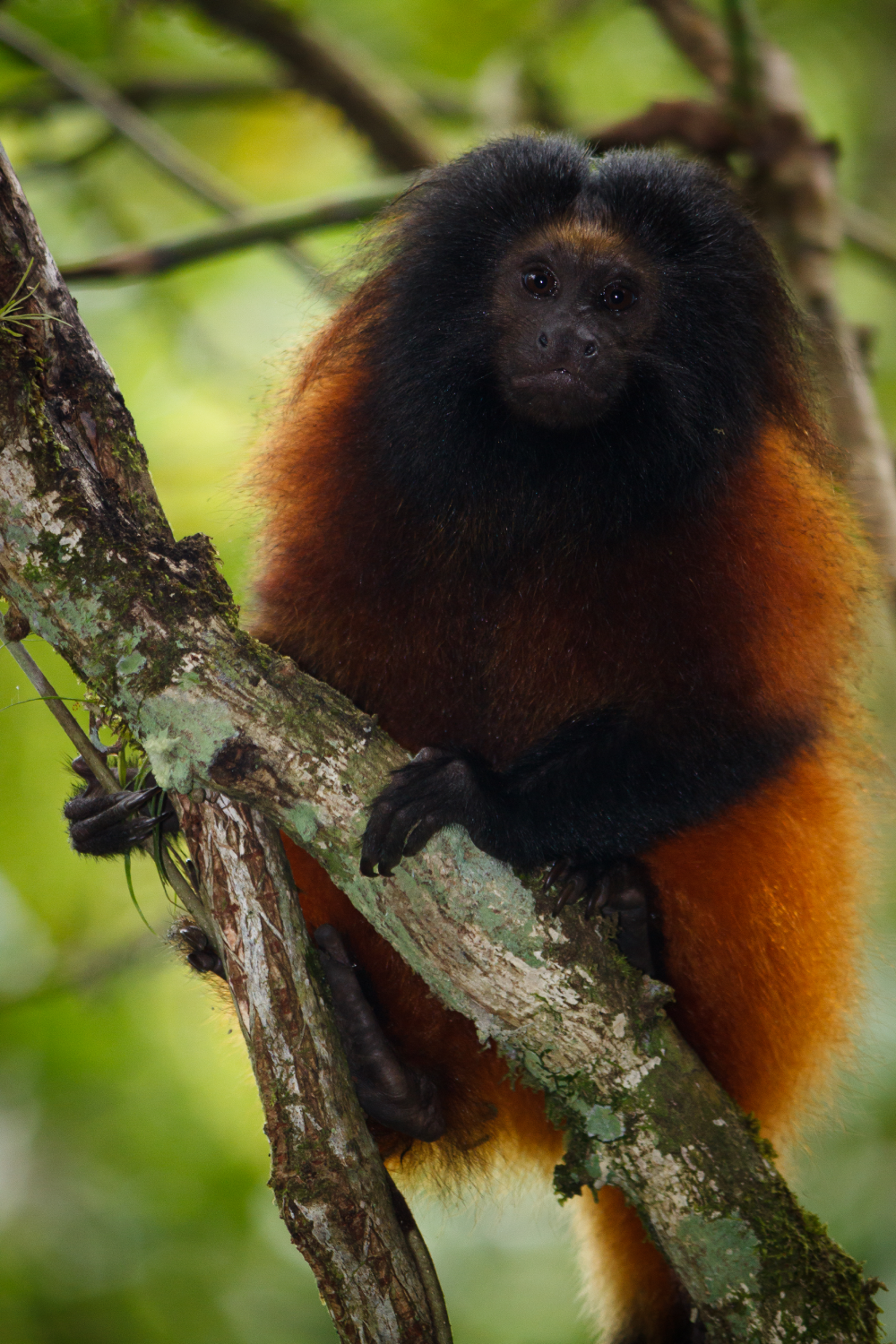In the lush rainforests of Brazil, a tiny and charismatic primate captivates the hearts of conservationists and wildlife enthusiasts alike. Meet the Black-faced Lion Tamarin (Leontopithecus caissara). With its distinctive appearance and intriguing behaviors, the Black-faced Lion Tamarin stands as a symbol of both the beauty and fragility of our planet’s biodiversity. In this article, we delve into the fascinating world of this remarkable primate, exploring its ecology, conservation status, and the efforts underway to ensure its survival.
Ecology and Habitat
Endemic to the Atlantic Forest of southeastern Brazil, the Black-faced Lion Tamarin is a small-bodied primate belonging to the Callitrichidae family. These forest-dwelling creatures are primarily arboreal, spending much of their time in the dense canopy where they forage for fruits, insects, small vertebrates, and plant exudates. Their diet is diverse, reflecting the rich biodiversity of their habitat. The Atlantic Forest, one of the world’s most biodiverse ecosystems, once stretched along Brazil’s coast, but rampant deforestation has reduced it to a fraction of its original size. Consequently, the Black-faced Lion Tamarin’s habitat has been fragmented, isolating populations and increasing their vulnerability to threats such as habitat loss, hunting, and disease.

Distinctive Features and Behavior
The Black-faced Lion Tamarin is named for its striking facial markings, which include a black mask extending from its forehead to its cheeks, contrasting with its golden-orange fur and a luxuriant mane encircling its head. These distinctive features lend it a regal appearance reminiscent of its larger feline namesake. Socially, Black-faced Lion Tamarins exhibit a complex system characterized by cooperative breeding, where dominant pairs within family groups monopolize reproduction, while other group members assist with raising offspring. This cooperative behavior contributes to the survival of the species by ensuring the care and protection of vulnerable infants.
Conservation Status and Threats
Despite their endearing nature, Black-faced Lion Tamarins face numerous threats to their survival. Habitat loss and fragmentation due to agricultural expansion, logging, and urbanization have severely impacted their populations. Additionally, illegal capture for the pet trade and hunting further exacerbate their decline. As a result of these threats, the Lion Tamarin is classified as Endangered on the International Union for Conservation of Nature (IUCN) Red List of Threatened Species. With an estimated population of fewer than 1,000 individuals scattered across fragmented forest patches, urgent conservation action is needed to prevent their extinction.
Conservation Efforts
Recognizing the critical status of the Black-faced Lion Tamarin, conservation organizations, governmental agencies, and local communities have rallied together to implement various strategies aimed at protecting this species and its habitat. Key initiatives include habitat restoration, community engagement, research and monitoring, and legal protection.
Future Prospects
While the challenges facing the Black-faced Lion Tamarin are formidable, there is hope for their conservation and recovery. Through concerted efforts aimed at habitat preservation, community engagement, and scientific research, we can secure a brighter future for these captivating primates and the fragile ecosystems they inhabit.
In the face of mounting environmental pressures, the plight of the Black-faced Lion Tamarin serves as a poignant reminder of the urgent need to protect our planet’s biodiversity. By conserving iconic species like the Black-faced Lion Tamarin, we not only safeguard the integrity of our natural world but also uphold our moral responsibility to future generations. Let us join hands in preserving the rich tapestry of life that sustains us all.









